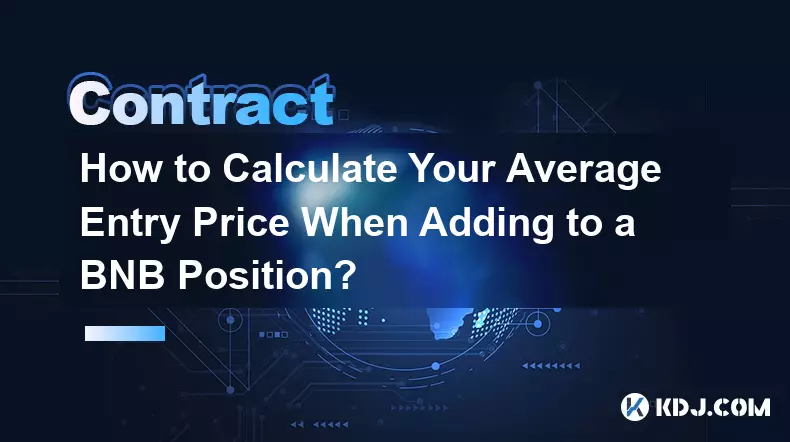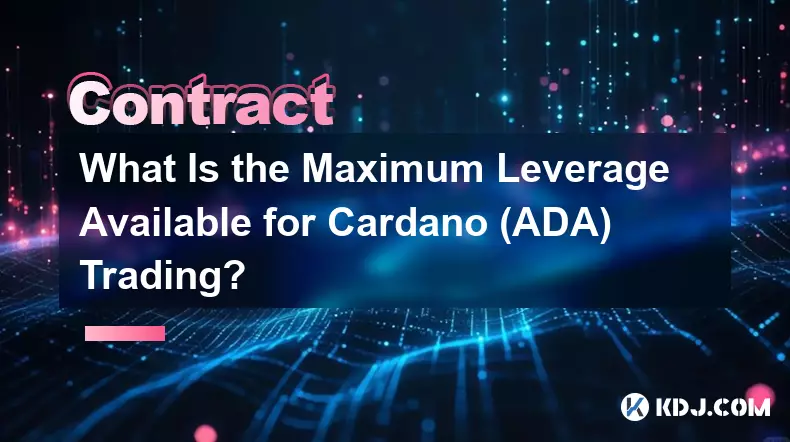-
 bitcoin
bitcoin $112139.774561 USD
-1.82% -
 ethereum
ethereum $3970.329568 USD
-3.85% -
 tether
tether $1.000078 USD
0.01% -
 xrp
xrp $2.611653 USD
-1.08% -
 bnb
bnb $1099.982737 USD
-3.67% -
 solana
solana $193.702075 USD
-3.33% -
 usd-coin
usd-coin $0.999832 USD
0.00% -
 dogecoin
dogecoin $0.193302 USD
-3.68% -
 tron
tron $0.294800 USD
-1.45% -
 cardano
cardano $0.642524 USD
-3.89% -
 hyperliquid
hyperliquid $47.524848 USD
1.27% -
 chainlink
chainlink $17.842256 USD
-2.41% -
 bitcoin-cash
bitcoin-cash $561.265025 USD
1.01% -
 stellar
stellar $0.317292 USD
-2.07% -
 ethena-usde
ethena-usde $0.999303 USD
0.01%
Cross vs. Isolated Margin: Which Is Better for Trading Ethereum (ETH)?
Cross margin uses your entire account balance as collateral, helping sustain positions during volatility, while isolated margin limits risk to a set amount per trade—ideal for precise risk control in ETH trading.
Oct 27, 2025 at 11:09 pm

Cross vs. Isolated Margin: Understanding the Basics
1. Cross margin uses the entire balance in a trader’s account as collateral for all open positions. This means that if one trade starts to lose value, the system can draw from other funds to prevent liquidation. This broad access to capital increases the chances of maintaining a position during volatile swings. Traders who deal with Ethereum (ETH), known for its price volatility, may find this flexibility advantageous when managing multiple trades simultaneously.
2. Isolated margin, on the other hand, limits the collateral to a specific amount assigned to each individual position. If a trade goes against the trader, only the allocated funds are at risk. This method offers precise control over exposure and potential losses per trade. For ETH traders who prefer defined risk parameters, isolated margin provides a structured approach to leverage without endangering the full account balance.
3. The core distinction lies in risk distribution. Cross margin spreads risk across the entire account, while isolated margin confines it to predefined amounts. Each model caters to different trading styles—aggressive multi-position traders might lean toward cross, whereas disciplined scalpers or swing traders often favor isolated setups.
4. Exchange interfaces typically allow switching between these modes before opening a position. Once selected, the choice affects how liquidation prices are calculated and how much buffer room exists before a forced exit. Misunderstanding this can lead to unexpected outcomes, especially during sharp ETH price movements common in bear or bull markets.
5. Leverage availability also varies between the two models. Some platforms offer higher maximum leverage under isolated settings due to reduced systemic risk for the exchange. However, actual usable leverage depends on current market conditions, funding rates, and personal risk tolerance.
Impact on Ethereum Trading Strategies
1. Trend-following strategies involving ETH benefit differently under each margin type. When riding prolonged upward or downward moves, cross margin can sustain positions longer by utilizing available equity. During extended consolidation phases, however, the same feature might result in larger drawdowns if multiple leveraged trades move against the trader simultaneously.
2. Scalping operations on short-term ETH fluctuations work well with isolated margin. Since each trade carries a fixed risk, traders can execute numerous entries and exits without constantly recalculating total exposure. This precision supports consistency, particularly when using automated bots or tight stop-loss orders.
3. Position traders holding ETH futures over days or weeks may combine both systems strategically. They could use isolated margin for high-conviction directional bets while allocating cross margin for hedging instruments like inverse swaps or options hedges. Such hybrid usage maximizes capital efficiency without sacrificing control.
4. Volatility clustering in ETH prices—where large moves tend to follow other large moves—makes margin selection critical. Isolated margin forces traders to re-evaluate their risk per trade after every significant price shift, promoting discipline. Cross margin allows continuity but demands active monitoring to avoid cascading liquidations.
5. Funding rate considerations in perpetual contracts also interact with margin types. In highly skewed funding environments, cross margin accounts may see gradual erosion of overall equity due to compounding fees across multiple positions. Isolated setups limit this effect to designated positions only.
Risk Management Implications for ETH Traders
1. Liquidation mechanics differ significantly between the two models. Under isolated margin, liquidation occurs when the allocated collateral falls below maintenance requirements for that specific trade. With cross margin, the system aggregates all assets and positions, delaying liquidation until the total account equity drops too low. This delay can be lifesaving during flash crashes or sudden spikes in ETH volatility.
2. Transparency in margin usage is easier to track with isolated settings. Traders can quickly assess which positions are under pressure and adjust accordingly. Cross margin obscures individual position health behind aggregated metrics, increasing the chance of overlooking weakening spots until it's too late.
3. Over-leveraging remains a danger regardless of model, but manifests differently. In isolated mode, taking excessive leverage on a single ETH trade leads to rapid liquidation. In cross mode, over-leveraging across several trades creates interconnected risk—where failure in one area threatens others through shared collateral.
4. Psychological factors play a role. Knowing that only a set amount is at stake encourages bolder decision-making in isolated scenarios. Conversely, the perceived safety net of cross margin may lead to complacency, resulting in inadequate position sizing or neglected risk checks.
5. Portfolio diversification within crypto pairs influences the optimal choice. A trader juggling ETH/USDT, BTC/USDT, and altcoin futures might prefer cross margin to streamline operations. Those focusing exclusively on ETH derivatives may achieve better results with isolated configurations tailored to each entry point.
Frequently Asked Questions
What happens to my other positions if one isolated margin trade gets liquidated?Only the position that breached the maintenance margin is closed. Other trades remain unaffected, preserving their assigned collateral and ongoing profit or loss calculations.
Can I change from cross to isolated margin after opening a trade?No, the margin mode must be selected before entering a position. Switching afterward is not permitted by most major exchanges to prevent manipulation of liquidation thresholds.
Does cross margin increase my effective leverage automatically?It does not technically increase leverage, but because more funds are accessible as collateral, the system may allow larger positions than isolated mode would permit under the same initial investment.
Which margin type is more suitable for beginners trading ETH?Isolated margin is generally recommended for newcomers due to its clear risk boundaries. It helps build sound habits around position sizing and loss control without exposing the entire wallet balance to a single mistake.
Disclaimer:info@kdj.com
The information provided is not trading advice. kdj.com does not assume any responsibility for any investments made based on the information provided in this article. Cryptocurrencies are highly volatile and it is highly recommended that you invest with caution after thorough research!
If you believe that the content used on this website infringes your copyright, please contact us immediately (info@kdj.com) and we will delete it promptly.
- Essex Post Office, 5p Coins, and King Charles: A Royal Mint Revelation!
- 2025-10-23 10:30:16
- Waymo's Newark Airport AV Tests: Alphabet's AI Gamble Pays Off?
- 2025-10-23 10:30:16
- King Charles 5p Coins: A Royal Flush in Your Pocket?
- 2025-10-23 10:35:18
- Solana, Crypto Advisory, and Forward Industries: A New York Minute on the Future of Finance
- 2025-10-23 08:51:22
- MAGACOIN: Ethereum Whales Dive into the Hottest Presale of 2025
- 2025-10-23 08:51:22
- Kadena's End of the Road? KDA Token Plummets Amid Project Abandonment
- 2025-10-23 08:55:34
Related knowledge

How to Calculate Your Average Entry Price When Adding to a BNB Position?
Oct 28,2025 at 12:24am
Understanding the Concept of Average Entry Price1. The average entry price is a crucial metric for traders who accumulate positions in assets like BNB...

What Is the Maximum Leverage Available for Cardano (ADA) Trading?
Oct 26,2025 at 12:18pm
Understanding Leverage in Cardano (ADA) Trading1. Leverage allows traders to control a larger position using a smaller amount of capital. In the conte...

What Are the Fees Involved in Trading Solana (SOL) Perpetual Swaps?
Oct 26,2025 at 07:36am
Fees Structure in Solana Perpetual Swap Trading1. Trading perpetual swaps on Solana-based decentralized exchanges involves several types of fees that ...

How to Trade Ethereum (ETH) Breakouts with High Leverage Safely?
Oct 26,2025 at 02:19am
Understanding High Leverage in Ethereum Trading1. High leverage allows traders to control large positions with relatively small capital, amplifying bo...

What Is an Insurance Fund in Bitcoin (BTC) Derivatives Trading?
Oct 29,2025 at 08:18am
Understanding the Role of Insurance Funds in BTC Derivatives1. In Bitcoin derivatives trading, an insurance fund acts as a financial backstop designed...

How to Set Multiple Take-Profit Orders for a Single BNB Position?
Oct 27,2025 at 05:00pm
Understanding Multiple Take-Profit Strategies in BNB Trading1. Traders in the cryptocurrency market often seek to maximize gains while minimizing emot...

How to Calculate Your Average Entry Price When Adding to a BNB Position?
Oct 28,2025 at 12:24am
Understanding the Concept of Average Entry Price1. The average entry price is a crucial metric for traders who accumulate positions in assets like BNB...

What Is the Maximum Leverage Available for Cardano (ADA) Trading?
Oct 26,2025 at 12:18pm
Understanding Leverage in Cardano (ADA) Trading1. Leverage allows traders to control a larger position using a smaller amount of capital. In the conte...

What Are the Fees Involved in Trading Solana (SOL) Perpetual Swaps?
Oct 26,2025 at 07:36am
Fees Structure in Solana Perpetual Swap Trading1. Trading perpetual swaps on Solana-based decentralized exchanges involves several types of fees that ...

How to Trade Ethereum (ETH) Breakouts with High Leverage Safely?
Oct 26,2025 at 02:19am
Understanding High Leverage in Ethereum Trading1. High leverage allows traders to control large positions with relatively small capital, amplifying bo...

What Is an Insurance Fund in Bitcoin (BTC) Derivatives Trading?
Oct 29,2025 at 08:18am
Understanding the Role of Insurance Funds in BTC Derivatives1. In Bitcoin derivatives trading, an insurance fund acts as a financial backstop designed...

How to Set Multiple Take-Profit Orders for a Single BNB Position?
Oct 27,2025 at 05:00pm
Understanding Multiple Take-Profit Strategies in BNB Trading1. Traders in the cryptocurrency market often seek to maximize gains while minimizing emot...
See all articles










































































